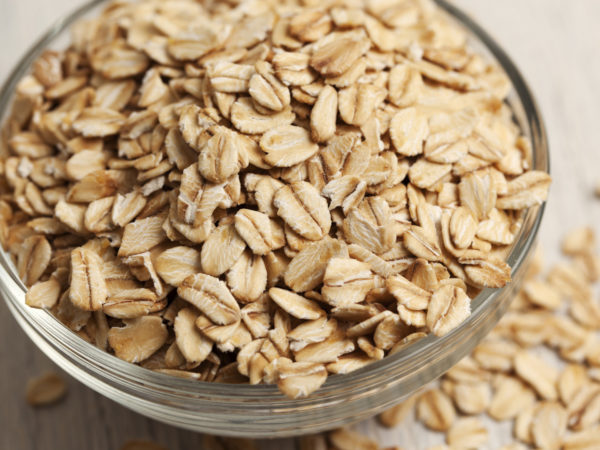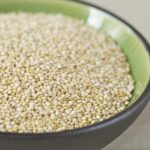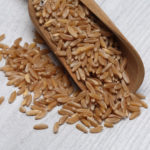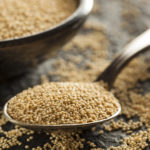Cooking With Grains: Oats

Oats are sold in more forms than any other grain – even the savviest grocery shopper can get overwhelmed. All forms of oats are high in a kind of fiber called beta-glucan, which has special cholesterol-lowering properties; studies have shown that those with high cholesterol have lowered their total level by eight to 23 percent simply by consuming three grams of this soluble fiber (the amount found in one bowl of oatmeal) per day.
Focus on these four types of oats:
- Oat groats (“whole” oats) are the most intact form, only the outermost inedible hull is removed.
- Steel-cut oats (also known as Irish or pinhead oats) are simply oat groats that have been cut into two or three pieces with steel blades, slightly decreasing their cooking time. Oat groats and steel-cut oats are the least processed; they take a long time to cook, but result in a chewy, lower-glycemic treat.
- Rolled oats are the result when oat groats are steamed, flattened and dried. This is the form most people know. Though somewhat processed, rolled oats are still a whole grain. I don’t recommend eating oats that have been processed any further than this, such as quick-cooking or instant oats – they are no longer whole, intact grains, and instant oatmeal packets often contain copious amounts of salt, sugar and other additives.
- Oat bran – the finely ground meal of oat groats’ bran layer – though not technically a whole grain, has the health benefits of one with its high fiber and low starch content; it makes a good addition to other foods, especially baked goods. Despite its short cooking time and smooth texture, it won’t spike blood sugar levels, thanks to its soluble fiber.
Oats have a higher fat content than other grains, and can go rancid more easily as a result. Whether you’re buying oat groats, steel-cut oats, rolled oats or oat bran, buy in smaller quantities, and store in the refrigerator. Although oats do not actually contain gluten, they are generally grown alongside gluten grains such as wheat and barley, which is why many people with gluten intolerance cannot eat them. However, pure, uncontaminated, certified gluten-free oats (which can be ordered online or sometimes found in health food stores) can usually be tolerated by those with celiac disease. In rare cases, a protein called avenin has triggered an immune response similar to that of gluten in some people with celiac disease. Proceed with caution if gluten is an issue for you.
Cooking time: Bran, 5-7 minutes; rolled, 10 minutes; steel-cut, 20-40 minutes; groats, 45-60 minutes
Liquid per cup of grain: Bran and rolled, 2 cups; steel-cut and groats, 3 cups
How to cook oats: With the exception of whole oat groats, oats are among the only grains that should be stirred while cooking. For oat groats, combine groats with water in a pot, cover and bring to a boil. Reduce heat and simmer for 45-60 minutes until tender. For steel-cut, rolled or oat bran, combine with the appropriate amount of water in a pot and, covered, bring to a boil. Reduce heat, and simmer uncovered for required time, stirring often (stir steel-cut oats less), until desired consistency is reached. Season with milk or soymilk, dried or fresh fruit, your favorite spices and a small amount of low-glycemic sweetener, if you wish. A spoonful of nut butter stirred in before eating also makes a delicious addition.
Try this recipe with oats: Tart Cherry Apple Crunch












